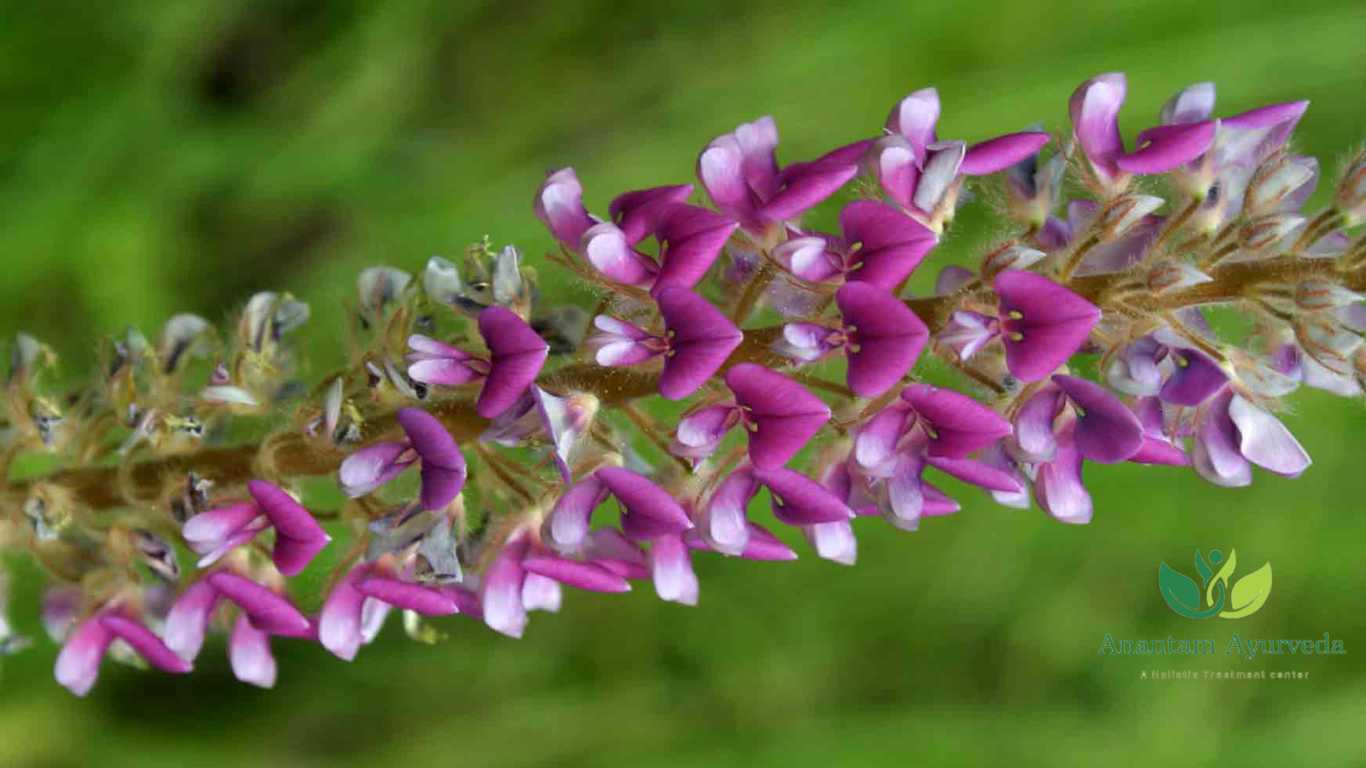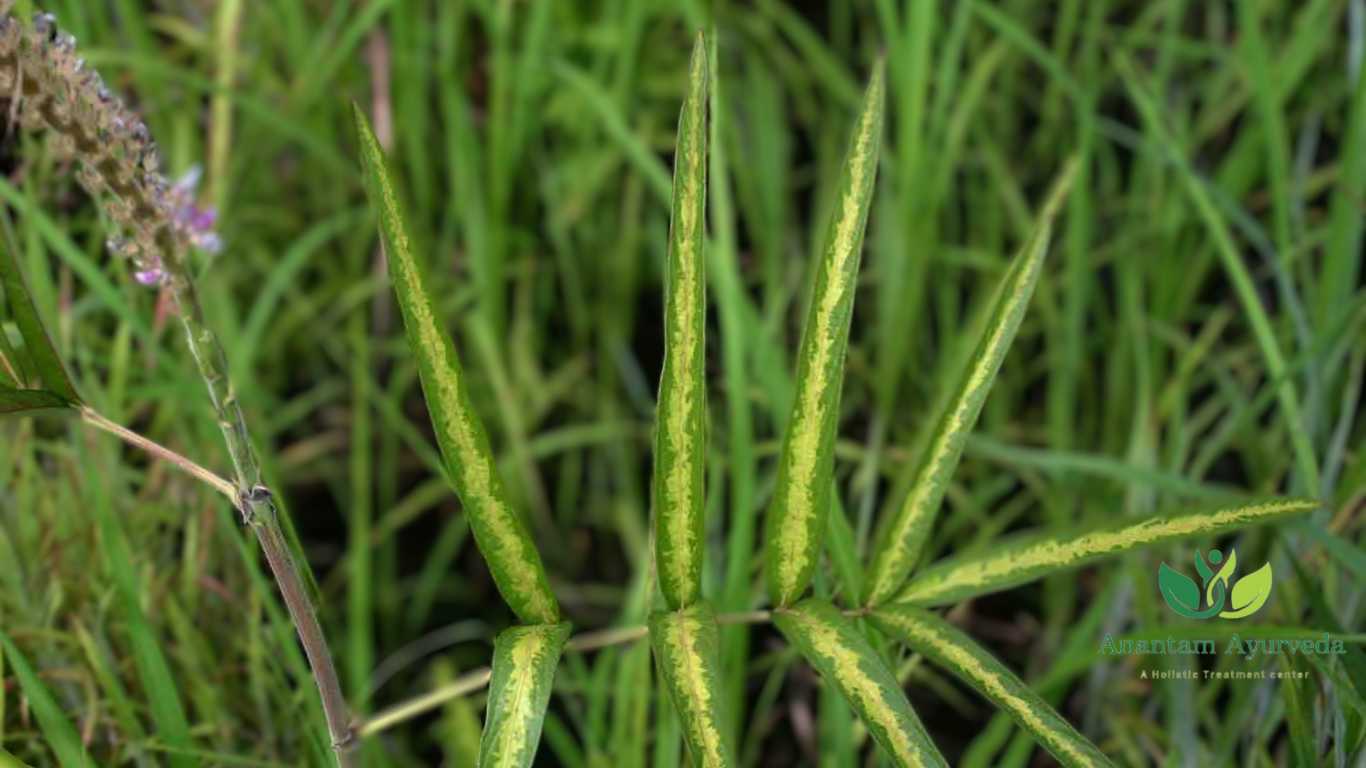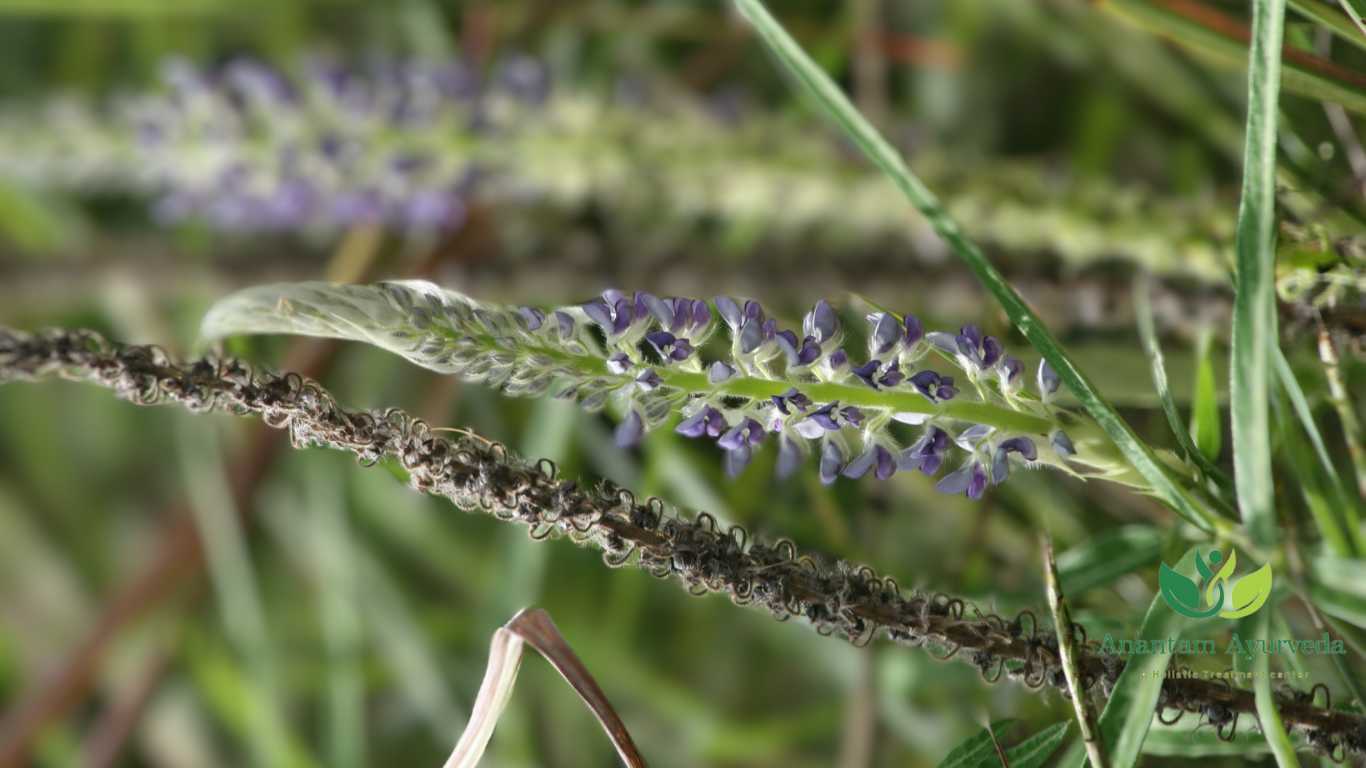Prishniparni (Uraria picta): Chemical Composition, Benefits & Uses
In the realm of herbal and traditional medicine, there exists a treasure trove of plants that have been revered for their healing properties for centuries. Among these botanical wonders, Prishniparni stands out as a remarkable herb with a rich history and a plethora of health benefits. In this comprehensive article, we delve into the world of Prishniparni, exploring its origins, nutrient profile, Ayurvedic significance, health advantages, medicinal uses, application methods, and essential safety considerations.
What is Prishniparni?
Prishniparni (Uraria picta) is a revered herb in Ayurveda, the ancient holistic healing system of India. Belonging to the Fabaceae family, it is known for its versatile healing properties. Prized for centuries, Prishniparni’s roots have been harnessed for respiratory wellness, immune support, and various other health benefits. Its rich chemical composition, including flavonoids, alkaloids, and saponins, underscores its significance in traditional and natural medicine. Prishniparni’s holistic attributes continue to make it a cherished botanical remedy in holistic wellness practices.
Vernacular Names of Prishniparni :
-
Hindi: Dabra, Pithavan
-
Tamil: Sittirappaladai, Kolaponna
Sanskrit Synonyms of Prishniparni :
-
Prishniparni – Refers to its thin, long leaves.
-
Prithakparni – Describes the distinct appearance of the leaves.
-
Kalashi – Symbolizes the herb’s ability to increase shukra dhatu (reproductive tissue).
-
Dhavani – Highlights its toxin-expelling properties.
-
Kostruka Puchika – The inflorescence resembles the tail of a jackal.
-
Simhapuchi – The inflorescence resembles the tail of a lion.
-
Guha – Represents the deep roots of the plant.
-
Shrugalavinna, Chitraparni – Other traditional names used in ancient texts.
-
Anghriparni – Describes the thick arrangement of leaves along the stem.
Classical Categorization of Prishniparni
Uraria picta has a well-documented role in Ayurveda, and various classical texts categorize it for its medicinal benefits:
-
Charaka Samhita:
-
Angamardhaprashamana – Relieves muscle pain (myalgia).
-
Shothahara – Acts as an anti-inflammatory agent.
-
Sandhaneeya – Useful in the treatment of fractures and dislocations.
-
-
Sushruta Samhita:
-
Classified in the Vidarigandhadi Gana and Haridradi groups of herbs for their health-promoting properties.
-
-
Vagbhata:
-
Part of the Haridradi Gana, a group of herbs known for their healing properties.
-
-
Bhava Prakasha:
-
Included in the Guduchyadi Varga, a group of herbs that boost vitality and overall health.
-
Varieties of Prishniparni :
-
Uraria hamosa
-
Uraria lagopoides
Adulterants to Avoid:
-
Flemingia species
-
Desmodium species
Botanical Classification of Prishniparni
Uraria picta, a plant of significant medicinal value in Ayurveda, is classified as follows:
-
Kingdom: Plantae (Plants)
-
Phylum: Tracheophyta (Vascular Plants)
-
Class: Magnoliopsida (Dicotyledons)
-
Order: Fabales
-
Family: Fabaceae (Legume Family)
-
Genus: Uraria
-
Species: picta
This plant belongs to the Fabaceae family, commonly known as the legume family, which includes many important medicinal plants. Its scientific classification underscores its botanical relationships and places it among other species with therapeutic properties.
Habitat of Prishniparni
Uraria picta is a versatile and widely distributed plant, thriving in various regions across the globe. This herb is commonly found in the following locations:
-
India (Across the sub-Himalayan tract, from Kashmir to West Bengal and Assam)
-
Bangladesh
-
Sri Lanka
-
Tropical Africa
-
Malay Islands
-
Philippines
-
Australia
-
Other parts of Asia
Uraria picta prefers dry grasslands and open forests, particularly in areas with well-drained soil. It grows abundantly in the sub-Himalayan regions of India, where it can be seen in both wild and cultivated forms. This plant is well-suited to tropical and subtropical climates, making it adaptable to diverse environmental conditions across Asia and beyond.
Morphological Features of Prishniparni :
-
Habit: Erect, slightly branched perennial herb, growing to a height of 1 to 2 meters.
-
Stem: Stout, with a diameter of up to 1.2 cm.
-
Leaves: Compound, with 1 to 3 leaflets. The leaves are linear-oblong or lanceolate, with petioles 4 to 6 cm long and subulate stipules.
-
Inflorescence: Cylindrical racemes that grow between 15 to 30 cm long and 1.5 to 2 cm broad.
-
Flowers: Purple-colored with a 6 mm long corolla.
-
Fruits: Pods that are glabrous, pale lead-colored, and 3 to 6 jointed.
-
Seeds: The seeds are about 3 mm long and 2 mm wide, folded on one another.
-
Useful Part: The root is the most commonly used part of the plant.
The Chemical Composition & Useful Parts of Prishniparni
Exploring Prishniparni’s depth, its chemical composition reveals a blend of powerful elements. Flavonoids, alkaloids, saponins, and more create a synergy that underlies its therapeutic potential.
Roots: The roots of Prishniparni are highly valuable for their potential to support respiratory health and alleviate conditions such as cough, bronchitis, and asthma. They are useful in the preparation of decoctions and herbal formulations.
Qualities of Prishniparni & Influence on Doshas According to Ayurveda
In Ayurveda, each herb possesses a unique set of qualities, known as “gunas.” Prishniparni, too, showcases specific gunas that define its exceptional healing properties.
-
Rasa (Taste): Sweet (Madhura) and Bitter (Tikta).
-
Guna (Qualities): Light (Laghu) and Oily (Snigdha), making it easy to digest and beneficial for the skin.
-
Vipaka (Post-digestive Effect): Sweet (Madhura), enhancing its cooling properties after digestion.
-
Veerya (Potency): Hot, helping to stimulate circulation and remove toxins.
-
Effect on Tridosha: Balances all three Doshas—Vata, Pitta, and Kapha.
| Aspect | Qualities |
|---|---|
| Rasa (Taste) | Bitter (tikta), Sweet (madhura) |
| Guna (Quality) | Lightness (laghu) |
| Virya (Potency) | Heating (ushna virya) |
| Vipaka (Effect) | Pungent (katu) |
One of the exceptional attributes of Prishniparni is its ability to balance all three doshas—Vata, Pitta, and Kapha. This unique quality underscores its significance in Ayurveda, where maintaining dosha equilibrium is central to well-being.
| Doshas | Balance all three doshas—Vata, Pitta, and Kapha. |

Health Benefits of Prishniparni (Uraria picta)
Prishniparni, a botanical marvel celebrated in Ayurveda, offers a myriad of health benefits that stem from its rich composition and holistic qualities. Let’s delve into the remarkable advantages this herb brings to the realm of holistic wellness.
1. Immune System Support
Prishniparni has immunomodulatory properties. Regular consumption of this herb can enhance the body’s natural defense mechanisms, bolstering immunity and helping fend off infections and illnesses.
2. Respiratory Wellness
This herb plays a crucial role in promoting respiratory health. Prishniparni’s anti-inflammatory and antimicrobial attributes make it a valuable ally against conditions like cough, bronchitis, and asthma.
3. Anti-Inflammatory Action
Prishniparni’s anti-inflammatory properties make it an effective remedy for various inflammatory conditions, including arthritis. It aids in reducing pain, swelling, and promoting joint mobility.
4. Digestive Harmony
Incorporating Prishniparni into your routine can promote healthy digestion. Prishniparni’s bitter taste and warming properties stimulate digestive fire, or Agni. It helps alleviate indigestion, bloating, and other digestive discomforts, contributing to overall digestive wellness.
Prishniparni Medicinal Uses
Prishniparni’s benefits extend to various systems of the body:
- Nervous System: It strengthens the nervous system and pacifies Vata dosha, contributing to overall neurological well-being.
- Digestive System: It acts as a carminative and absorbent, facilitating the normal movement of doshas. It’s indicated in conditions like bloody diarrhea, bleeding hemorrhoids, malabsorption syndrome, and excessive thirst.
- Circulatory System: It is useful in edema, gout, arthritis and blood-borne diseases. Prishniparni also acts as a cardiac tonic, supporting cardiovascular health.
- Respiratory System: Prishniparni helps expel vitiated Kapha dosha and is indicated in cough, breathing disorders, and related concerns.
- Reproductive System: It has aphrodisiac properties and useful in conditions like oligospermia.
- Excretory System: It is indicated in dysuria and aids in increasing urine production.
- Musculoskeletal System: It promotes fracture healing, strengthens bones, and useful in cases of general weakness.
- Fever: It acts as an antipyretic and is indicated in fever associated with a burning sensation.

How to Use Prishniparni (Uraria picta)
It can be consumed or applied in various forms, depending on the desired health benefits. Here are some common methods of use:
1. Decoction
Prepare herbal decoction using Prishniparni roots. Steep a teaspoon of dried Prishniparni parts in hot water for about 10-15 minutes. Strain and enjoy the soothing and rejuvenating effects.
2. Supplements
Ayurvedic formulations often include Prishniparni as a key ingredient. Consult with an Ayurvedic practitioner to find the right supplement or formulation based on your individual health needs.
3. Powders
You can add Prishniparni powder to smoothies, juice or even sprinkled over foods. Start with a small quantity and gradually increase as per the guidance of an Ayurvedic expert.
4. Oil Infusions
Prishniparni-infused herbal oils can be useful for massages. Warm the oil and gently massage it onto the skin to promote relaxation, alleviate muscle tension, and support overall well-being.
5. Pastes
Create herbal pastes using Prishniparni powder by mixing it with water or other carriers. Apply the paste externally to soothe skin irritations, promote wound healing, and address specific skin concerns.
6. Consult Ayurvedic Experts
Before incorporating it into your routine, it’s crucial to consult with experienced Ayurvedic practitioners. They can provide personalized guidance on dosage, frequency, and the most suitable method of use based on your unique constitution.

Precautions and Considerations
- Pregnant or lactating women should consult a healthcare professional before using it.
- Excessive consumption may lead to digestive discomfort in some individuals.
- Always source medicines from trusted and reputable sources to ensure its quality and authenticity.
Conclusion
Uraria picta is a treasure trove of health benefits as per the principles of Ayurveda. From its roots to leaves, each part of the plant offers unique therapeutic potential. By incorporating it into your lifestyle, you can tap into the wisdom of traditional medicine to support joint health, respiratory wellness, and overall vitality. Remember, Ayurveda emphasizes balance, so consult an expert before embarking on a journey with Prishniparni to experience its benefits fully.
Frequently Asked Questions (FAQs) About Prishniparni
1. What is Uraria picta in Ayurvedic medicine? Uraria picta, also known as Prishniparni, is a medicinal herb used in Ayurveda for treating various ailments like inflammation, bone fractures, fever, and digestive issues.
2. What are the key medicinal properties of Uraria picta? It has anti-inflammatory, analgesic, antioxidant, anti-pyretic, and aphrodisiac properties, making it useful for treating pain, fever, and enhancing sexual health.
3. How does Uraria picta support bone health? Uraria picta is commonly used in Ayurveda to aid in the healing of bone fractures and promote overall skeletal health.
4. What are the recommended uses of Uraria picta in Ayurveda? It is used for digestive issues, circulatory problems, respiratory conditions, and as an aphrodisiac. It also helps with strengthening the body and promoting recovery from fractures.
5. Are there any safety concerns with using Uraria picta? Uraria picta should be used under the guidance of a qualified Ayurvedic practitioner to ensure proper dosage and avoid interactions with other treatments.
You can also read about Green cardamom.
You can follow us on twitter, facebook, instagram & Google News

1 Comment